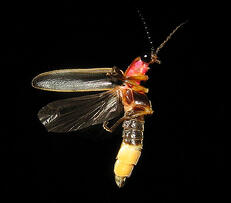By combining time-lapse luminescence microscopy with a microfluidic device, researchers at Duke University were able to track the dynamics of cell cycle genes in single yeast with subminute exposure times over many generations. Typically time-lapse fluorescence microscopy of genetically encoded fluorescent proteins is the gold standard for measuring in vivo dynamics of gene expression in single cells.
This video illuminates the new method using luciferases when studying gene expression dynamics via budding yeast.
(video courtesy of youtube)
Fluorescence microscopy uses intense light to excite a fluorophore, which can result in high background autofluorescence and phototoxicity in cells. An alternative is luciferase, an enzyme that emits photons and is active upon folding. The photon flux per luciferase is significantly lower than that for fluorescent proteins. Thus time-lapse luminescence microscopy has been successfully used to track gene dynamics only in larger organisms and for slower processes, for which more total photons can be collected in one exposure.

After testing green, yellow, and red beetle luciferases and optimizing substrate conditions for in vivo luminescence, the method was faster in cells with much smaller volumes than previous work. Fluorescence of an optimized reporter (Venus) lagged luminescence by 15-20 min, which is consistent with its known rate of chromophore maturation in yeast. This work demonstrates that luciferases are better than fluorescent proteins at faithfully tracking the underlying gene expression.
(photo courtesy of wikimedia commons)
A luciferase is a type of oxidative enzyme that allows for biolumiescence. This type of enzyme is most commonly recognized in firefly's. This new approach allows scientists to track the activation and deactivation of genes over a tiny cell’s fast life cycle more accurately than standard labeling techniques using other glowing proteins.
Duke University was recently ranked third in the nation for life science expenditures, spending over $831 million. With recent grants and funding, and with some of the top scientists in the nation, Duke is on the cutting edge of research.
For over 22 years Biotechnology Calendar, Inc. has been connecting researchers at leading research institutions with companies who provide laboratory products.
To join us in 2015 as an exhibitor at Duke University click below. For researchers attendance is free and there will be an extensive buffet, door prizes and an iPad giveaway. To preregister click below.



